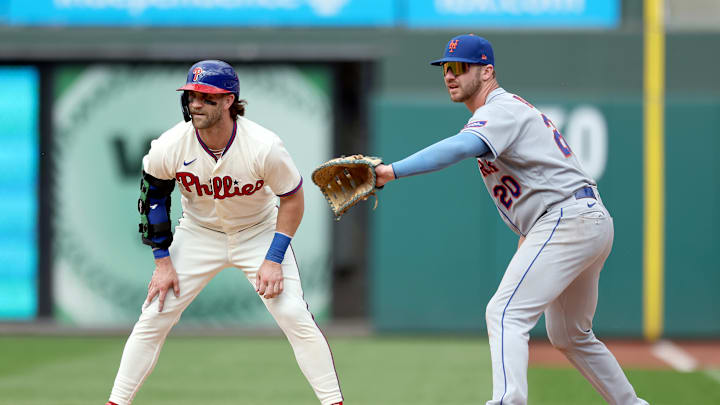Take note, New York Mets front office people and decision-makers. The Philadelphia Phillies are continuing with a six-man rotation this season for at least however long it works. They have enough guns healthy enough to make it work. The presence of Kodai Senga on the roster in Flushing and dreams of Yoshinobu Yamamoto or even Shohei Ohtani signing this offseason makes the Mets a candidate to do the same.
This isn't the first time anyone has discussed the idea of a six-man rotation for the Mets. At the start of this year, having Senga and several other older pitchers had the club planning out a six-man rotation as needed. Tylor Megill, David Peterson, and maybe even Joey Lucchesi would help make this work. The plan would work around the schedule and wouldn’t be so much a strict six-man rotation but more of an occasional one.
Injuries and our lost trust in some of the starters drove a spike through enjoying this plan or even seeing it implemented as often as the team had hoped. The Mets can go into observation mode and take away pluses and minuses from how it works for Philadelphia. Is it something to consider on a more full-time basis next year?
Why a six-man rotation plan is tougher for the NY Mets to create than it is for the Phillies right now
The difference between the current Mets pitchers and several of the guys the Phillies have is how long they'll typically go into a given game. Zack Wheeler and Aaron Nola are true innings eaters even in years where they’re less spectacular. The Phillies have pushed Taijuan Walker deep and Michael Lorenzen has shown an ability to fit in as a durable starter in his short tenure with the club.
The Mets will undoubtedly have personnel changes to their starting rotation between now and next season. Only Senga is a guarantee. Jose Quintana could always end up moved due to him having only one more year of control. Could the Mets squeeze an extra inning or two from Quintana with the change to a six-man rotation? The extra day of rest should allow any starter to toss a few more pitches, no?
Carrying an extra starting pitcher means one less bullpen arm, but more innings from your starters eliminates the need for one of those mid-level arms. If a six-man rotation is a serious consideration, having optional relievers is important yet not above having ones you can trust and rely on. Rather than promote one more below average reliever or move someone to the bullpen from the rotation, the Phillies are asking for more hours when their starting pitchers do work with a little extra rest between. It’s too soon to tell how this will work. The Seattle Mariners are implementing the same plan. Will they have better luck than Philly and become an example for the Mets?
MLB teams regularly test six-man rotations even for just a part of the season. August tends to have fewer off-days. In preparation for the playoffs, it’s not a terrible thing to try out a few times through.
The difficulty is having six capable starting pitchers. For most of the year, Philadelphia barely had five. Now because of additions, good health, and some trust in Cristopher Sanchez, they're able to go six deep.
It'll take at least three moves for the Mets to have any semblance of a full and trustworthy starting six and that's if you think a guy like Peterson is even worthy. Odds are stacked against them planning for a traditional starting six. However, they can look back at how Philadelphia or Seattle handles these final weeks to learn some pros and cons of doing the same. Senga and Yamamoto or Ohtani (probably not him) make it more of a necessity. The Mets could skip the sixth starter when the schedule allows it. They just need to pick the right with the outside additions.
